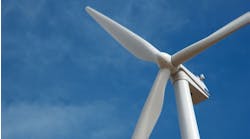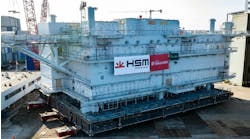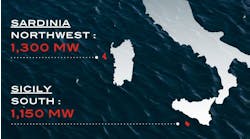Offshore staff
BATHGATE, UK – CSignum says testing has finished of a prototype SeaSpring developed with TFI Marine as part of the Floating Wind Technology Accelerator Competition.
The system is designed to reduce snatch and fatigue loads on floating offshore wind structures. It incorporates CSignum’s HydroFi low frequency subsea wireless communication system, said to allow real-time autonomous full life fatigue monitoring.
Piezoelectric ceramics embedded within the system generate power for the wireless monitoring system. The tests, involving the SeaSpring and HydroFi, took place under simulated load conditions at Exeter University’s DMaC test rig.
The program, funded by the Scottish government and managed through the Carbon Trust’s Floating Wind Joint Industry Project, allowed CSignum and TFI Marine to manufacture and test their prototype solution to address issues associated with monitoring and inspection of mooring lines that have impacted the commercialization of floating offshore wind.
Their solution integrates mooring load sensing, power generation and wireless subsea communications into an existing spring to provide autonomous full life fatigue monitoring. Incorporating monitoring equipment into the mooring line spring is said to lessen the need for physical inspection of mooring lines and to adopt a risk-based approach to monitoring.
In addition, the spring serves as a dampener on mooring lines and the monitoring equipment is powered by movement of the spring (via the piezo-electric generator), removing the need for an external power source.
HydroFi technology employs variable low-frequency and low power consumption for subsea and bi-directional data transmission through the water-air boundary. It is designed to connect to most subsea sensors using standard communications interfaces.
For this project, the transmitter and data logger are below the water, integrated onto the spring (attached to the mooring line), automatically transmitting to a receiver mounted on the wind-turbine floating platform.
“Existing load measurement solutions normally consist of a wired strain gauge on a load pin somewhere on the mooring line and wherever you place that pin, it is susceptible to failure,” said Noel Halloran, CEO at TFI Marine.
Richard Adams, sales director at CSignum, added: “Now, instead of operators having to do costly maintenance on mooring lines and receiving infrequent updates on their operation status, we can let them see the actual data in real time, so they know when maintenance or replacement is warranted, reducing opex and driving down the cost of energy.”
06/11/2021



